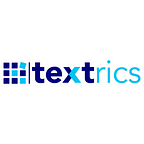Topic modeling is an unsupervised machine learning method that can scan the document sets and identify the phrase patterns and words inside them, and create a collection of the word groups and related expressions that rightly characterize the document sets. It gives us techniques to schedule, understand, and review textual big data.
It is the part of natural language processing that is used to instruct the machine learning models. Topic modeling is the process of logically choosing words that represent a specific subject from inside the document.
From a business point of view, topic modeling delivers the best time- and effort-saving advantages.
Topic modeling techniques:
Topic modeling is all about logically correlating various words. Here are the three topic modeling techniques as follows:
1. Latent Semantic Analysis (LSA)
Latent Semantic Analysis uses a bag of word model, which is used to create a term-document matrix. Rows represent terms and columns represent documents. Thus, it helps in the explanation of phenomena of meaning in words and passages of words by using (TF-IDF) term frequency-inverse document frequency of identifying documents. Hence, for any automated document classification, document analysis, or text summarization, LSA is the first choice. If the quality of the documents is good, LSA can achieve a very high accuracy in document classification.
2. Probabilistic Latent Semantic Analysis (pLSA)
Probabilistic Latent Semantic Analysis (pLSA) was used to resolve the representation challenge in LSA by substituting the SVD with the probabilistic model. pLSA refers to every entry in the TF-IDF matrix with the help of the probability.
In the equation of, P (D, W) = P(D) ∑ P(Z|D) P(W|Z) gives the joint probability to recommend how similarly it is to identify a particular word inside a document depending on the topic distribution in it.
Whereas the other parameterization P (D, W) = ∑P(Z)P(D|Z) P(W|Z) indicates the probability that the document includes a provided topic, and here the word inside the document refers to the provided topic. The parameterization exactly indicates the LSA technique of the topic modeling.
pLSA can create terms to select pairs or regions in an image. These terms can be used for object categorization or image auto-annotation. The pLSA technique is extensively used in the image analytic domain as well.
3. Latent Dirichlet Allocation (LDA)
Latent Dirichlet Allocation is the pLSA Bayesian version. The main concept is substituted with the Dirichlet allocations and the distribution comes along probability simplex samples. A probability simplex denotes the number sets which include that one. Suppose the set includes three numbers, it is well-known as the three-dimensional Dirichlet distribution.
The topic’s entire desired number is fixed as ‘k’s in the dimensional Dirichlet distribution. The LDA model verifies all the documents, makes every word to the k topics, and gives the word representation and documents for the provided topic.
Topic Modeling Algorithm
In the topic modeling algorithm, we have the algorithm for Latent Dirichlet Allocation. It runs with simple steps. We have to perform every text processing activity. By taking out the stopwords from every document.
1. Assign n topic number which will be recognized with the LDA algorithm. How can we identify the number of the right topic? Of course, it is not simple, and it is generally a trial and error method. We use several n values until we are happy with the outcome.
2. Schedule all the words in each document to not be a permanent topic. It will upgrade in the next step randomly.
3. In this step, we will follow via all documents. Each word of the document will be evaluated to two values.
· This document refers to the probability for the specific topic. It depends on how many words from this document denote the present topic word.
· The document proportion is scheduled to the latest topic word due to the present word.
Most of the time we work with the third step before starting the algorithm. Finally, we will check every document, identify the document. It is an important task depending on the words. In the end, we allotted the document for the topic.
Unlike neural nets, topic models are interpretable and easy to diagnose, tune, and evaluate. Hopefully this blog has been able to touch base on the underlying math, and details of different topic modeling techniques.
Sign up for our free demo now: https://www.textrics.ai/websignup
